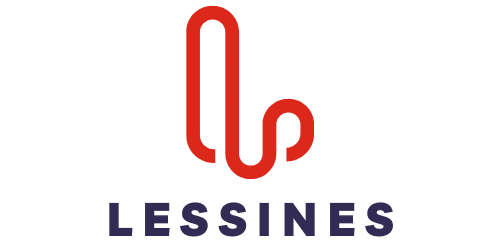What’s New in the Development of AI for Real-Time Sign Language Translation?

In the realm of technological advancements and artificial intelligence, the surge of innovation is constant, rapid, and unstoppable. However, one area that merits particular attention is the development of AI for real-time sign language translation. This article aims to provide you with a comprehensive understanding of the current state of this groundbreaking field, including the most recent models and systems, the role of data in refining translation capabilities, and the benefits of these advancements for the deaf and hearing-impaired community.
The Evolution of AI in Sign Language Recognition
Sign language translation has always been a complex challenge in the field of Artificial Intelligence. The task of converting gestures and signs into spoken language requires a very specific and sophisticated technology. In the past, the process was slow and sometimes inaccurate, but the recent advancements in AI have allowed for real-time translation with improved accuracy and speed.
A lire aussi : What’s the Potential for AI to Detect Early Signs of Crop Diseases from Satellite Imagery?
Over the years, the model used for sign language recognition has evolved. In the early stages, most systems largely relied on glove-based systems that tracked the movement and position of the hands. However, they were inconvenient and didn’t fully capture the nuances of sign language that include facial expressions and body postures.
Thanks to deep learning and AI, the new model uses computer vision algorithms to analyze and interpret the signs made by individuals in real time. This means that the system can now recognize signs from raw video input without the need for any additional hardware. These models are trained using a large amount of data, including images and videos of people performing various signs. The more data the model is fed, the more accurate its translations become.
Dans le meme genre : How Are IoT Sensors Enhancing the Durability and Performance of Civil Infrastructure?
Bridging the Communication Gap for the Deaf and Hearing-Impaired
AI-powered sign language translation is not merely a technological feat, it is a means of empowering people. For the nearly 466 million individuals worldwide with serious hearing loss, communication can often be a strenuous task. English, or any spoken language for that matter, often isn’t their first language. Many deaf people rely on sign language, such as American Sign Language (ASL), to communicate.
Real-time translation technology aids deaf and hearing-impaired individuals by providing them with the opportunity to communicate smoothly with people who don’t understand sign language. By allowing for immediate translation of sign language into speech or text, it helps overcome the language barrier that was once a significant obstacle.
Moreover, these systems are not only unidirectional. They can also convert spoken language into sign language, providing a comprehensive communication solution for deaf and hearing-impaired individuals. This two-way communication feature heightens the impact and usability of such technology in everyday situations.
The Role of Data in Refining Translation Capabilities
The success of any AI model is largely tied to the amount and quality of data it is nurtured with. For sign language translation systems, this holds even more truth. These systems rely on vast amounts of data to learn, adapt, and improve.
Raw data input comes from various sources, such as videos of individuals performing sign language. These videos are then processed and used to train the AI models. AI algorithms analyze this data, learning the nuances of sign language, including different signs, facial expressions, and body postures.
The more diverse the data, the better the AI system can cater to a wider audience. As data input continues to grow, these models continually learn and improve, leading to ever more accurate translations. This constant learning and adaptation make AI-powered sign language translation an ever-evolving field, with new advancements and improvements cropping up all the time.
Emerging Trends in AI-Powered Sign Language Translation
As we delve deeper into the realm of AI-powered sign language translation, we witness new trends that are shaping the future of this technology. One emerging trend is the use of augmented reality (AR) in these systems. AR can project sign language translations onto real-world environments, making it easier for individuals to understand and follow along.
Another significant trend is the incorporation of AI-powered sign language translation into mainstream technology. Major tech companies are recognizing the potential of this technology and integrating it into their products and services. For instance, video conferencing platforms are starting to incorporate real-time sign language translation, making digital communication more accessible for deaf and hearing-impaired individuals.
In conclusion, the development of AI for real-time sign language translation is a rapidly evolving field, ceaselessly striving to improve the lives of deaf and hearing-impaired individuals worldwide. As technology advances and more data becomes available, we can only expect these systems to become more accurate, efficient, and widespread.
Overcoming Challenges with AI: Real-time Sign Language Recognition
AI models are not always flawless, particularly when interpreting sign languages. Dealing with sign language translation poses unique challenges that have to be addressed. Most notably, the complexity of sign language as a communication form is one key difficulty. Unlike spoken languages, sign languages include not only the positioning and movement of hands but also facial expressions and body postures.
Moreover, sign languages are not universal. Different countries and regions have their own sign languages. For instance, there are differences between British Sign Language (BSL) and American Sign Language (ASL). The challenge lies in teaching AI models to recognize and distinguish between different sign languages efficiently and effectively.
To overcome these challenges, AI models for sign language translation are trained using a vast amount of data. This data is collected from various sources, such as videos of individuals performing sign language. These videos offer a wide range of signs, expressions, and postures, which the AI algorithms analyse and learn from.
Deep learning and computer vision play crucial roles in these AI models. The computer vision algorithms are responsible for identifying and interpreting the signs in real time. Meanwhile, deep learning allows the models to continually learn and adapt, improving their translation capabilities as more data is fed into the system.
Despite the challenges, the development of AI for real-time sign language translation continues to make remarkable strides. The current AI models are not only faster and more accurate, they also offer two-way communication, translating spoken language into sign language and vice versa. This feature indeed makes AI sign language translation a revolutionary tool for deaf and hard-of-hearing individuals.
The Future of AI in Real-time Sign Language Translation
Looking into the future, we see vast potential for further advancements in AI-powered sign language translation. Already, we are witnessing the emergence of new trends that are likely to shape the future of this technology.
One promising area is the integration of AI-powered sign language translation into mainstream technology. Major tech companies are recognizing the potential of this technology and are beginning to incorporate it into their products and services. Video conferencing platforms, for example, are starting to include real-time sign language translation features. This integration into everyday technology will undoubtedly make digital communication more accessible and inclusive for the deaf and hard-of-hearing community.
Furthermore, the inclusion of augmented reality (AR) in sign language translation systems is another emergent trend. AR can project sign language translations onto real-world environments, making it easier for individuals to understand and follow the signs.
In conclusion, AI-powered sign language translation is a powerful tool that can bridge the communication gap for deaf and hard-of-hearing individuals. As technology continues to evolve, we can anticipate even greater advancements in this field. With more data becoming readily available for AI models to learn from, the future of real-time sign language translation is indeed promising. As more individuals and businesses embrace this technology, we can hope to see a more inclusive world where everyone, irrespective of their hearing ability, can communicate freely and effectively.
